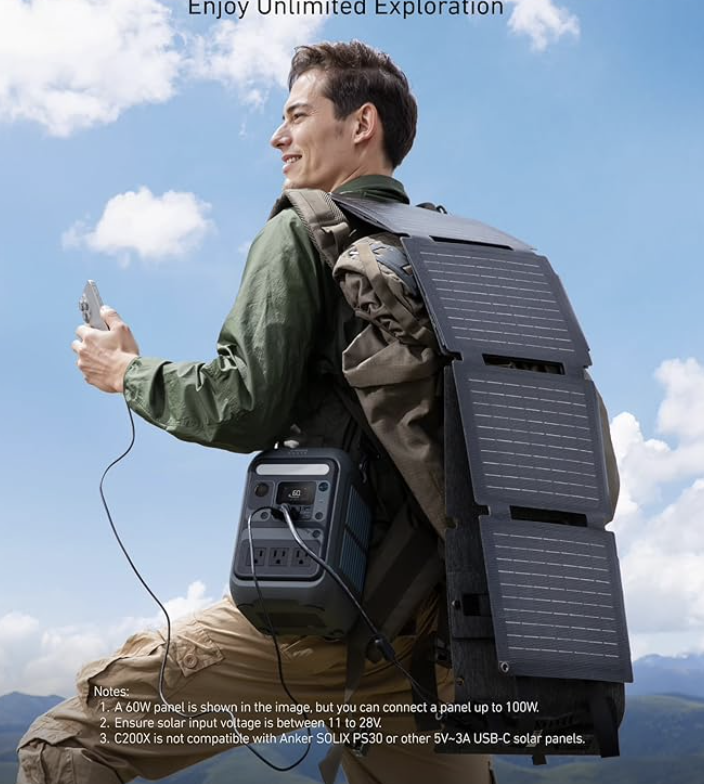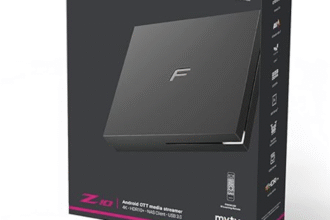In hiking, energy autonomy has become as crucial as water and food. Between GPS devices, smartphones, headlamps, and cameras, our electronic equipment is now essential to our safety and enjoyment in the mountains. Discover how to choose the perfect portable battery for your outdoor adventures.
Why a Hiking-Specific Power Bank?
Energy Challenges for the Modern Hiker
Multiplication of Electronic Devices: Today’s hiking involves numerous essential electronic equipment. An average hiker carries 4 to 6 devices requiring energy: smartphone (navigation, weather, emergency), dedicated GPS, headlamp, smartwatch, camera, and sometimes emergency beacon.
Extreme Usage Conditions: Standard batteries particularly suffer in mountain environments. Intense cold can reduce their capacity by 20 to 40%, humidity can damage them, and repeated shocks during movement severely test their resistance.
Critical Autonomy for Safety: A power failure in the wilderness isn’t just an inconvenience—it can become dangerous. A GPS that dies in fog, a phone that can’t call for rescue, or a headlamp that fails during a night descent can transform a pleasant outing into a critical situation.
Evolution of Energy Needs
Rising Consumption: Modern hiking apps (offline mapping, GPS tracking, real-time weather) are particularly power-hungry. A smartphone used intensively for navigation can drain in 6 to 8 hours, compared to 1 to 2 days in normal use.
New Digital Usage: The democratization of outdoor photography and video, real-time social media sharing, and use of safety apps (geolocation, weather alerts) have multiplied our energy needs while hiking.
Essential Characteristics of a Hiking Power Bank
Optimized Capacity: Finding the Right Balance
Real Needs Calculation: For a day hike, count approximately 10,000 mAh to fully recharge a smartphone and partially charge other equipment. For multi-day treks, aim for 20,000 to 30,000 mAh depending on your devices.
Smart Distribution: A good hiking power bank must be able to power multiple devices simultaneously. Choose models with multiple USB ports (USB-A and USB-C) and fast charging technologies to optimize recharge times during breaks.
Weather Resistance: Your All-Terrain Ally
Waterproof Certification: Look for minimum IPX4 certification (resistance to water splashes) or better IPX7 (temporary immersion). This protection is crucial against rain, melting snow, or condensed humidity in backpacks.
Shock and Vibration Resistance: The MIL-STD-810G standard guarantees resistance to shocks, drops, and constant vibrations from trekking. This military certification ensures proper functioning despite rough terrain constraints.
Extreme Temperature Performance: A quality battery must function from -20°C to +60°C. Lithium-polymer technologies resist cold better than standard lithium-ion, retaining up to 80% of their capacity at -10°C.
Compactness and Ergonomics: Every Gram Counts
Optimized Weight/Capacity Ratio: The best hiking batteries achieve a ratio of 150 to 200 mAh per gram. A 20,000 mAh battery shouldn’t exceed 400-450 grams to remain acceptable for trekking.
Functional Design: Choose flat, rectangular shapes that easily slip into backpack side pockets. Models with rounded corners prevent premature wear of textile equipment.
Practical Visual Indicators: A precise LED display showing charge level (in percentage) is essential for planning recharges. Avoid models with only 4 LEDs that provide too approximate information.
Advanced Technologies for Outdoors
Integrated Solar Charging: Ultimate Autonomy
High-Efficiency Photovoltaic Panels: Power banks with integrated solar panels offer theoretically unlimited autonomy. Recent models achieve 15-20% efficiency, allowing recovery of 2,000 to 3,000 mAh per day of full sun.
Usage Realism: In practice, solar charging remains a supplement rather than a primary solution. It partially compensates for daily consumption but doesn’t replace a well-sized battery for your needs.
Geographic Optimization: Efficiency varies enormously based on latitude, season, and weather. Above 2,000 meters altitude, more intense radiation significantly improves solar panel performance.
Wireless Charging: Added Convenience
Universal Qi Compatibility: Power banks with Qi wireless charging eliminate cables for compatible smartphones. This function is particularly practical during breaks, allowing simple charging by placing the device on the battery.
Energy Efficiency: Wireless charging remains less efficient (70-80%) than wired charging, but this loss is offset by usage simplicity and reduced connector wear.
Fast Charging: Optimizing Breaks
Quick Charge and Power Delivery Technologies: Quick Charge 3.0 and USB-C Power Delivery standards allow recovering 50% charge in 30 minutes on compatible devices. This speed is crucial during short breaks at shelters or bivouacs.
Intelligent Power Management: The best batteries automatically adapt output power to each connected device’s needs, optimizing efficiency and protecting sensitive equipment.
Selection Criteria by Hiking Type
Day Hiking: Compact Essentials
Typical Profile: 6-10 hours walking, return to starting point Recommended Capacity: 10,000 – 15,000 mAh Acceptable Weight: 200-300 grams Priorities: Compactness, fast charging, weather resistance
Ideal Model Type: 12,000 mAh battery, IPX6 certification, 2 USB ports (USB-A + USB-C), precise digital display, weight under 250 grams. This configuration covers intensive day needs while remaining lightweight.
Multi-Day Trek: Autonomy Above All
Typical Profile: 3-7 days without electricity access Recommended Capacity: 20,000 – 30,000 mAh Acceptable Weight: 400-600 grams Priorities: Maximum capacity, robustness, multiple output ports
Optimal Configuration: 25,000 mAh battery with 4 output ports (2 USB-A + 2 USB-C), bidirectional fast charging, informative LCD screen, MIL-STD-810G certification. Additional weight is justified by critical autonomy in multi-day situations.
Long-Duration Expedition: Hybrid Solution
Typical Profile: More than 7 days, extreme conditions Recommended Capacity: 30,000+ mAh or modular system Hybrid Solution: Main battery + portable solar panel Priorities: Absolute reliability, repairability, extreme resistance
Recommended System: Combination of 30,000 mAh battery + 20-28W foldable solar panel. This configuration ensures extended autonomy with continuous recharge possibility in good weather.
Optimized Usage Tips
Smart Energy Management
Device Prioritization: Establish clear hierarchy: safety (GPS, emergency phone) > navigation (offline maps) > comfort (camera, smartwatch) > pleasure (music, social media).
Settings Optimization: Reduce screen brightness, activate power saving modes, disable Wi-Fi and Bluetooth when unused, use airplane mode with active GPS for pure navigation.
Recharge Planning: Prioritize charging during long breaks (meals, bivouac) rather than while walking. Charging is more efficient when stationary and avoids accidental disconnections.
Protection and Maintenance
Secure Transport: Use a rigid protective case to avoid shocks and accidental activation. Place the battery in an easily accessible pocket for frequent recharges.
Humidity Management: Even with waterproof certification, avoid prolonged humidity exposure. Use desiccant packets in your backpack during very humid weather.
Long-Term Storage: Store lithium batteries at 50-70% charge in a cool, dry place. Complete prolonged discharge can irreversibly damage cells.
2025 Innovations and Trends
Emerging Technologies
Graphene Batteries: The first commercial graphene batteries promise charge times divided by 5 and lifespan multiplied by 3. Though more expensive, they will revolutionize outdoor activities in coming years.
Kinetic Charging: Prototypes integrate energy recovery through movement. Backpack swaying or body movement generates supplementary charge while walking.
Embedded Artificial Intelligence: Future batteries will integrate AI algorithms to automatically optimize energy distribution based on usage habits and environmental conditions.
Market Evolution
USB-C Standardization: Widespread USB-C adoption simplifies equipment. A single battery with multiple USB-C ports can power all modern devices with one cable type.
Increasing Modularity: Modular systems allow capacity adaptation to needs: basic battery extensible with additional modules depending on expedition duration.
Best Options Comparison
Compact Segment (10,000 – 15,000 mAh)
Market Leader: Ultra-compact batteries prioritizing weight/capacity ratio. Ideal for sport hiking and quick outings where every gram matters.
Strengths: Exceptional lightness, fast charging, accessible price Limitations: Limited autonomy, fewer output ports
Versatile Segment (16,000 – 25,000 mAh)
The Balanced Choice: Optimal compromise between capacity, weight, and features. Suits most outdoor uses from 1 to 4 days.
Strengths: Versatility, good price/quality ratio, complete features Usage: Short to medium treks, family hiking
High Capacity Segment (25,000+ mAh)
For Expeditions: Batteries prioritizing absolute autonomy. Essential for long treks or conditions where recharging is impossible.
Strengths: Maximum autonomy, multiple outputs, extreme robustness Trade-offs: High weight, higher price, bulk
Conclusion: Choose According to Your Real Needs
The perfect portable battery doesn’t exist universally—it depends entirely on your hiking practice. A weekend walker will prioritize lightness, while a high-altitude trekker will favor autonomy and robustness.
Golden Rule: Always size slightly above your calculated needs. Real conditions (cold, intensive use, failures) invariably consume more energy than expected.
Sustainable Investment: A quality battery represents a multi-year investment. Prioritize reliability and essential features over ephemeral gadgets.
Portable energy has become the fourth pillar of hiking equipment, after water, food, and shelter. Choosing the right battery means ensuring serenity and safety for all your outdoor adventures.





